Why Does My Fan Continue to Run High
Z7_3054ICK0KGTE30AQO5O3KA30N0
hp-concentra-wrapper-portlet
![]() Actions
Actions
HP Desktop PCs - Fan is Noisy and Spins Constantly (Windows)
This document is for HP Desktop PCs.
When a computer fan spins loudly for longer than 20 seconds, there might be an issue with a fan, or the computer might be overheating. Adjust the power settings, let the computer cool for a few minutes, and then troubleshoot the noisy fan.
note:It is normal for the fans to spin loudly for five to twenty seconds when the computer initially turns on.
Step 1: Adjust the computer power settings
Adjust the power settings to decrease power consumption, which can help the fans maintain an optimal internal temperature up to 30° C (86° F).
-
Turn on the computer.
-
In Windows, search for and open Control panel.
-
In the Control Panel search field, type power options, and then select Power Options from the list.
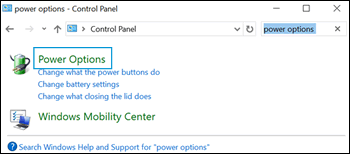
-
Click Change plan settings.
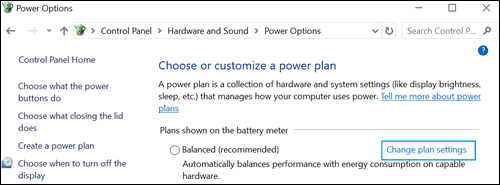
-
Click Change advanced power settings.
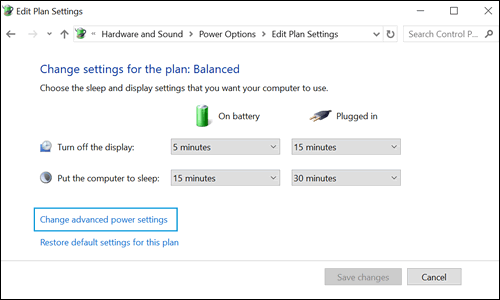
-
Click the drop-down menu, and then select Power saver.
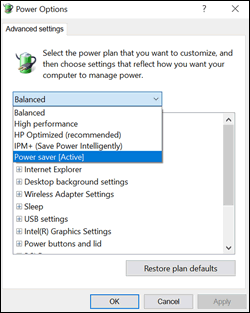
-
Select Sleep from the list, and then click Sleep after and Hibernate after to open each setting.
note:
Sleep mode places the computer in a power-saving mode that does not close any open applications, while Hibernation mode saves any work in open applications, and then turns the computer off.
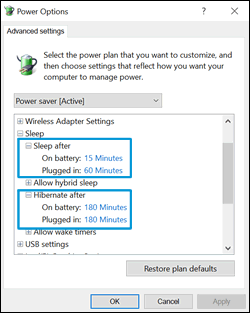
-
Decrease the amount of time for each setting to reduce unnecessary strain on the fans when the computer is not being used.
-
Click OK to save the changes.
-
Restart the computer.
If the issue persists, continue to the next step.
Step 2: Increase the efficiency to reduce heat
The computer works harder and generates more heat when multiple applications are open at the same time or while playing graphically intense video games.
Use the following tips to improve computer efficiency.
-
Change which applications run when Windows starts by using the Startup tab in Task Manager.
-
Close applications when you are done using them.
-
Close the Internet browser when you are not using it.
-
Lower the game resolution and decrease the graphics settings if the computer becomes warmer than usual while playing.
If the issue persists, continue to the next step.
Step 3: Let the computer cool down
Remove the side panel and wait a few minutes to determine if the computer is too warm, which can cause the fans to work harder in order to decrease the internal temperature.
warning:The edges of metal panels can cut skin. Be careful not to slide skin along any interior metal edge of the computer.
-
Turn off the computer, and then unplug the power cable.
-
Remove any objects near the computer.
-
Loosen or remove the side panel screws, if necessary.
note:
Your computer side panel might be secured differently, but the location of the screws should be similar.
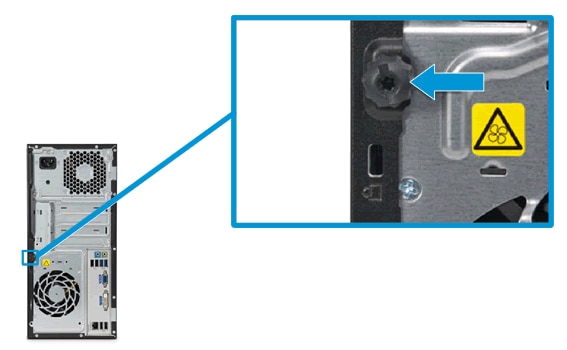
-
Slide the side panel back and away from the computer, and then set the panel aside.
warning:
Do not touch any of the components inside the computer, even when the computer is off to avoid shocking yourself or damaging the computer.
-
Reconnect the power cable, turn on the computer, and then wait five to ten minutes.
-
If the noise does not stop, continue to the next step.
-
Step 4: Determine which fan is making the noise
Listen for and locate the noisy fan inside the computer, and then take note of its location.
caution:You can use a flashlight to help you locate each fan, but do not put the flashlight inside the computer.
-
With the computer on, listen for the noisy fan, and then use the following diagrams to determine its location.
Example of an HP desktop computer (left) and an HP slimline computer (right)
-
Power supply fan
-
Graphics card fan
-
Processor fan
-
Power supply fan vent
-
Case fan vent
-
Case fan

-
-
Turn off the computer, and then unplug the power cord.
-
Secure the side panel back onto the computer, and then continue to the next step.
Step 5: Troubleshoot the fan
A dirty fan, vent, or outdated software can cause a fan to make more noise than normal. Read the section matching the location of the fan.
caution:Do not continue to use the computer when a fan is not working correctly. Over time, exposure to consistently high temperatures can damage other important internal components.
Step 6: Use Task Manager to identify corrupt processes
When the CPU is overburdened by multiple processes, such corrupt software or malware, the fans run continuously to remove the excess heat. Open Windows Task Manager to identify these processes, and then close them.
note:An unnecessary or corrupt process can consume anywhere between 1% to 100% of the CPU. Even a low but constant 3% to 4% load can cause the fans to spin faster.
-
Make sure your computer is connected to a network with an active Internet connection.
-
Press Ctrl, Alt, Delete, and then select Start Task Manager or Task Manager.
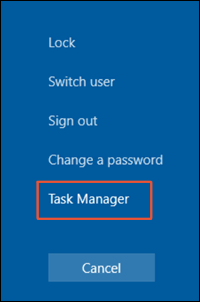
-
Click More details, if necessary.
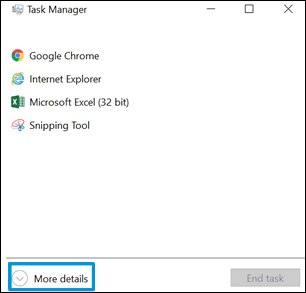
-
Click the Processes tab, and then click the CPU column header to sort the processes by CPU load.
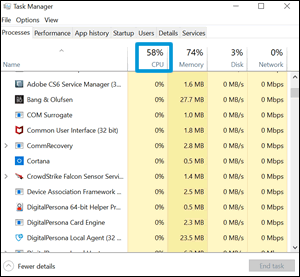
-
Use the Internet to research and confirm any suspicious processes that display in the list.
-
Select the suspicious process, and then click End task.
If you did not find any suspicious processes or the issue persists, continue to the next step.
Step 7: Contact HP Customer Support
If the previous steps did not resolve the issue, contact HP Customer Support for warranty and service options.
Source: https://support.hp.com/id-en/document/c01857696
0 Response to "Why Does My Fan Continue to Run High"
Post a Comment